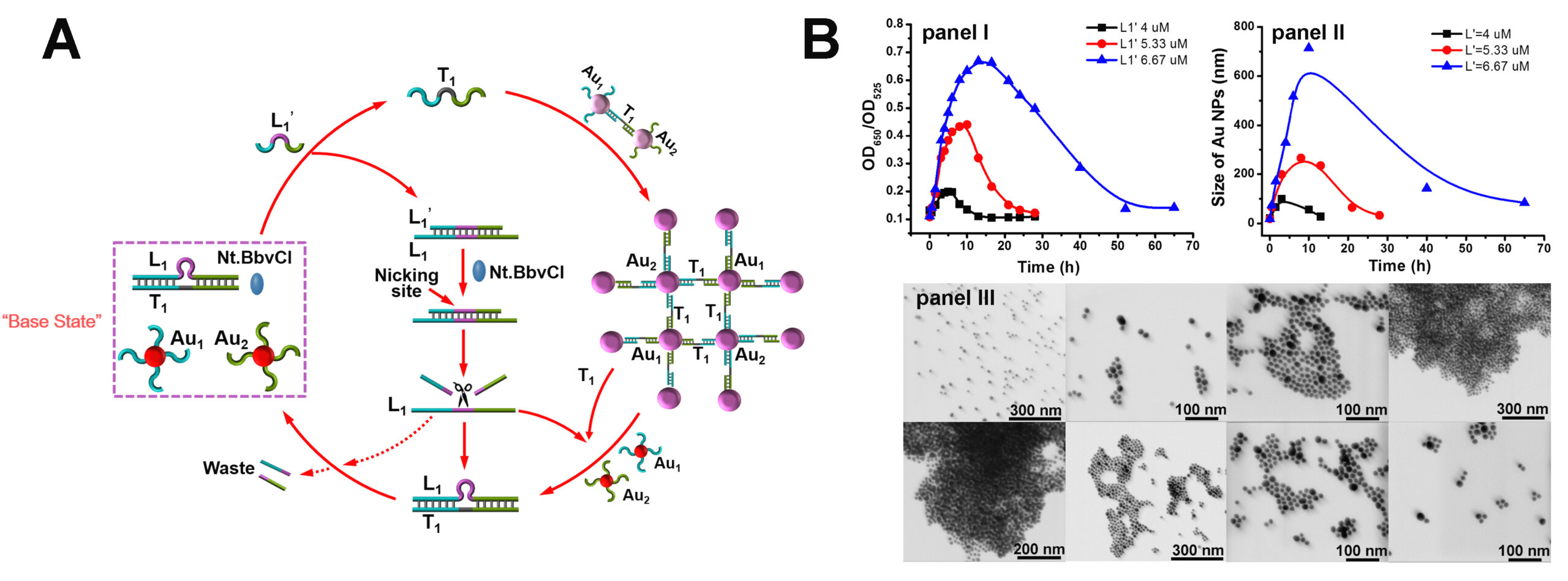
Dissipative DNA-Based Plasmonic Nanostructures
Itamar Willner, Yu Ouyang
Institute of Chemistry, The Hebrew University of Jerusalem, Jerusalem, Israel
Dissipative, out-of-equilibrium, transient networks play key transformations in biological processes, such as signal propagation, motility and the formation and dissociation of nanostructures, such as fibers. Dissipative transformations require the supply of a fuel and the generation of “waste” products, or the continuous supply of energy, such as light or heat. The base sequence encoded in nucleic acids and their triggered reconfiguration by enzymes, strand displacementor light provide versatile means to design DNA-based transient, dissipative, DNA-based networks.[1-2]
Here we describe the dissipative transient aggregation and deaggregation of plasmonic nanoparticles and of nucleic acid-stabilized plasmonic Ag nanoclusters. The transient, dissipative, control over the optical properties of the plasmonic structures will be demonstrated, and a variety of means to characterize the systems by absorption and fluorescence spectroscopies, electron microscopy, dynamic light scattering (DLS) and more, will be discussed. Figure 1(A) depicts schematically the DNA network for the transient aggregation/deaggregation of Au nanoparticles. Figure 1(B) shows the transient optical features of the system (interparticle plasmonic absorbance coupling changes), panel I, transient DLS properties of the system, panel II, and time-dependent TEM images, panel III. The effect of auxiliary triggers on the transient behavior of the systems will be discussed.
References:
[1] S, Wang et al., J. Am. Chem. Soc., 142, 17480-17488 (2020).
[2] Z. Zhou et al., J. Am. Chem. Soc., 143, 5071–5079 (2021).

© 2025 · Biophotonics4Future
Leibniz Institute of Photonic Technology
Albert-Einstein-Str. 9
07745 Jena | Germany
www.leibniz-ipht.de




